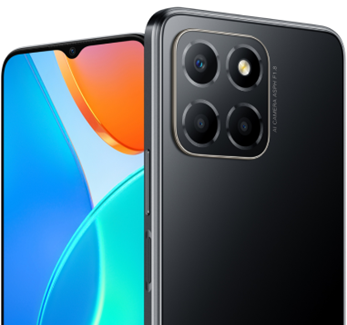The Engineering Behind Foldable Phones: A Peek Inside the Technology
Foldable phones are revolutionizing the smartphone market with their unique ability to blend portability and a larger screen experience. Understanding the engineering behind these innovative devices i...
18/12/2024
Foldable phones are revolutionizing the smartphone market with their unique ability to blend portability and a larger screen experience. Understanding the engineering behind these innovative devices involves diving into cutting-edge materials, intricate mechanical designs, sophisticated software, and advanced power management systems. This blog will explore the core aspects of foldable phone technology, providing a deeper appreciation for the marvels behind these devices.

Structural Engineering of Foldable Screens
Foldable screens represent a remarkable feat of structural engineering. Traditional smartphone screens use rigid materials that can't bend without shattering. Foldable screens, however, use organic light-emitting diode (OLED) technology. OLED screens are inherently flexible because they use carbon-based organic compounds that emit light when an electric current is applied.
A critical material in foldable screens is polyethylene terephthalate (PET), which forms the basis of the flexible cover window. This material, combined with a layer of ultra-thin glass or flexible plastic, provides the necessary durability and clarity. Engineers also use a substrate layer of thin-film transistors (TFTs), essential for controlling pixel illumination across the screen.
Achieving a balance between flexibility and durability is a major engineering challenge. Each layer in the screen assembly must contribute to both the device's bendability and its resistance to scratches, impact, and daily wear. As a result, these composite layers form a robust yet pliable screen that can endure repeated folding and unfolding cycles without degrading performance or quality.
These advancements in screen technology are complemented by the intricate folding mechanisms that drive the physical transformation of these devices.
Mechanisms Behind the Folding Motion
The folding mechanism is another fascinating aspect of foldable phones. The hinge system, often concealed inside the device, is designed to allow smooth folding and unfolding actions while providing the necessary structural support to the screen. High-quality materials, such as stainless steel and aluminum alloys, are commonly used in crafting these hinges, emphasizing both strength and lightness.
Engineers have developed various innovative hinge designs to optimize the folding experience. One mechanism involves a multi-gear design that evenly distributes mechanical stress and ensures synchronous folding. Another noteworthy design is the "waterdrop" hinge, which creates a teardrop-shaped gap when the phone folds, reducing the screen's internal stress and allowing for a tighter closure.
To ensure longevity, these hinges are subjected to rigorous testing, often involving thousands of folding and unfolding cycles. Manufacturers aim to combine aesthetics with functionality, ensuring that the hinges not only blend seamlessly into the phone's design but also provide a reliable and durable folding experience.
Just as the mechanical elements are critical, so too are the software adaptations that ensure a seamless user experience when utilizing these foldable devices.

Software Adaptations for Foldable Devices
Foldable phones necessitate specific software adaptations to optimize their unique features. Unlike traditional smartphones, foldable devices require an interface that smoothly transitions between various screen configurations without disrupting the user experience.
Developers focus on creating responsive user interfaces (UI) that adapt dynamically to folding actions. For instance, when a foldable phone unfolds into a larger screen, the UI must seamlessly expand to utilize the extra real estate without distorting the layout or content. This dynamic resizing involves intricate algorithms and real-time data processing.
Moreover, Multi-Active Window features are crucial for foldable devices. This software adaptation allows users to run multiple apps simultaneously, taking advantage of the expanded screen space. Enhanced multitasking capabilities, app continuity, and adaptive touch gestures are part of these innovations, ensuring foldable phones offer an intuitive and flexible operating environment.
The collaboration between hardware and software engineers is vital in delivering a cohesive and functional user experience on foldable devices, requiring continuous improvements and innovations. However, a phone's usability is significantly influenced by its power management capabilities.
Battery and Power Management in Foldable Phones
The power management in foldable phones presents unique challenges and opportunities. Foldable devices often demand more power due to their larger screens and extensive multitasking capabilities. Battery technology must evolve to meet these increased energy requirements without compromising the device's form factor.
Foldable phones use sophisticated battery arrangements, sometimes incorporating dual batteries located on each side of the fold to maintain a slim and balanced design. These batteries work in tandem to power the device efficiently. Advanced power management systems are crucial for regulating the power distribution and ensuring optimal battery performance.
Efficient heat dissipation is also crucial, as the compact design of foldable phones can lead to overheating issues. Engineers implement advanced thermal management solutions to maintain device temperatures within safe limits, protecting both the hardware and user experience.
Understanding the complexities of battery management offers insights into the overall engineering brilliance that makes foldable phones a reality. To appreciate the depth of design and technology integration, it’s worth diving back into the overall conclusion of this fascinating topic.
Conclusion
The engineering behind foldable phones is a blend of innovation, precision, and interdisciplinary collaboration. From flexible OLED screens and sophisticated hinges to adaptive software and advanced battery systems, each element plays a critical role in shaping the future of mobile technology. As engineers continue to push the boundaries, foldable phones are set to become even more prevalent, offering users unique and enhanced mobile experiences.
In the context of foldable phones, the Huawei Mate X6 stands out with its impressive features and engineering feats. To learn more about the Huawei Mate X6, including its price, you can check it out here: huawei mate x6 price.
FAQs
What materials are used in the construction of foldable screens?
Foldable screens primarily use OLED technology, with materials like polyethylene terephthalate (PET), ultra-thin glass, flexible plastic, and thin-film transistors (TFTs) to achieve flexibility and durability.
How do foldable phone hinges withstand repeated folding?
Foldable phone hinges are crafted from high-quality materials such as stainless steel and aluminum alloys, and they are designed with multi-gear or "waterdrop" mechanisms. They undergo rigorous testing to ensure longevity and reliability.
What software innovations are necessary for foldable phones?
Software innovations for foldable phones include dynamic user interfaces, Multi-Active Window features for multitasking, app continuity, and adaptive touch gestures, ensuring a seamless transition between different screen configurations and an enhanced user experience.




